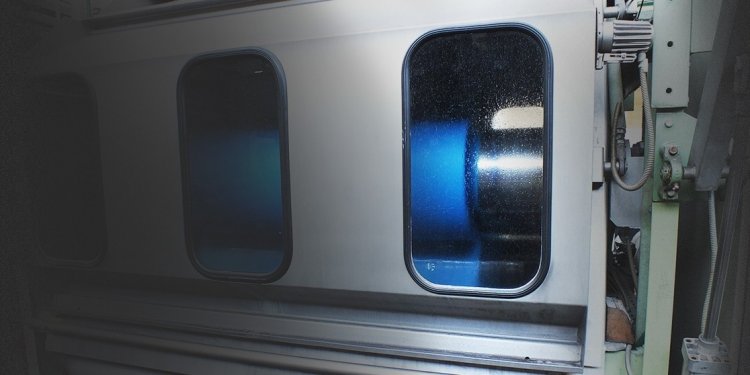
Dyeing of Fabrics
 Photography by: Paul BARBERA
Photography by: Paul BARBERA
Fabric-Dyeing How-To
You don’t have to start with white fabric—if you want to reinvent a colored item, try a color remover (similar to bleach, but nondamaging) before dyeing it. This will whiten or lighten the fabric so it can take on the new color.
1. Wash your fabric item if it is new. Cover work surface with a dropcloth. Fill a bucket, bin, or stainless steel sink (large enough to hold the fabric loosely) about halfway with very hot tap water or boiling water. (For wool, water should be warm, not hot.) Wearing rubber gloves, add liquid dye, mixing colors as desired (see Mixing Colors, right). Add salt if dyeing cotton or linen, or white vinegar for wool or silk; amount will depend on size of dye bath. We used ¼ cup of either salt or vinegar for a bath of about 1 gallon, ½ cup for 2 gallons, and 1 cup for 3 or more gallons. (These additions help the fabric take the dye.)
2. Thoroughly wet fabric (you can run large pieces through the washing machine’s rinse cycle to wet them evenly) and immerse in dye bath. With a stainless steel spoon (or a wooden spoon reserved only for dyeing), move fabric around in water to avoid uneven dyeing. Keep item in dye 5 to 15 minutes, stirring the whole time. Allow fabric to get a little darker than you want it, as it will fade slightly with rinsing and drying.
3. Carefully remove fabric from dye and rinse in running water, starting with warm water and then making it cooler, until it runs clear. (You can also rinse the fabric in the washing machine’s rinse cycle.) Wash out bucket, bin, or sink immediately.
4. Wash item with mild detergent on the cold cycle, then dry.
Mixing Colors
Below are formulas for the colors shown, each using 1 quart of water and the specified amounts of Rit liquid dyes.
A, G. 1 teaspoon Fuchsia
B. 1 tablespoon Golden Yellow + 1 teaspoon Tan + ½ teaspoon Kelly Green
C. 1 tablespoon Scarlet + 2 teaspoons Petal Pink + ½ teaspoon Taupe
D. 2 teaspoons Petal Pink + ½ teaspoon Cocoa
E. 6 teaspoons Dark Green + 2 teaspoons Teal
F. 3 teaspoons Teal + 2 teaspoons Taupe
To scale up the dye-bath size, use more water, but don’t increase dye amounts in the same proportions. For instance, the dark-green bedding uses formula E; we made a bath with about 30 gallons of water, 12 tablespoons of Dark Green dye, and 4 tablespoons of Teal dye. Generally, start with less dye, test on a paper towel, and add more as needed.
Custom Colors
When coming up with your own shades, get the look you want without wasting dye by making a small dye bath first: Add the dyes to hot water in a large glass measuring cup, noting how much color you’re adding. Test the color with a paper towel. When you have the hue you want, make the bath in a larger amount. (See Mixing Colors, above, for tips on increasing the size of the dye bath.)
Surprise Results
You never know exactly how a material will take a color. A white napkin and an off-white napkin may not come out looking the same. Trim and stitching can take color differently than the base fabric does. And while dyeing is a great way to revive old, faded fabrics, it won’t remove or even necessarily cover stains.
For Large Items
When dyeing bedding and tablecloths, we used a large plastic bin set in a bathtub (to catch any drips) and brought in pots of water heated on the stove. It’s especially important to keep the fabric moving while it sits in the dye bath; use a long spoon to carefully stir, lift, and redistribute it constantly. When the items reached the desired color, we lifted them out and placed them in another empty bin to take them to the washing machine, where we rinsed them on the rinse cycle.
Washing Dyed Fabrics
The first several times you wash dyed items, wash them alone to prevent bleeding—or add an old white washcloth or sock to see if the dye runs. Over time and with repeat washings, the color of the dye may fade—but remember, you can always dye them again.

















